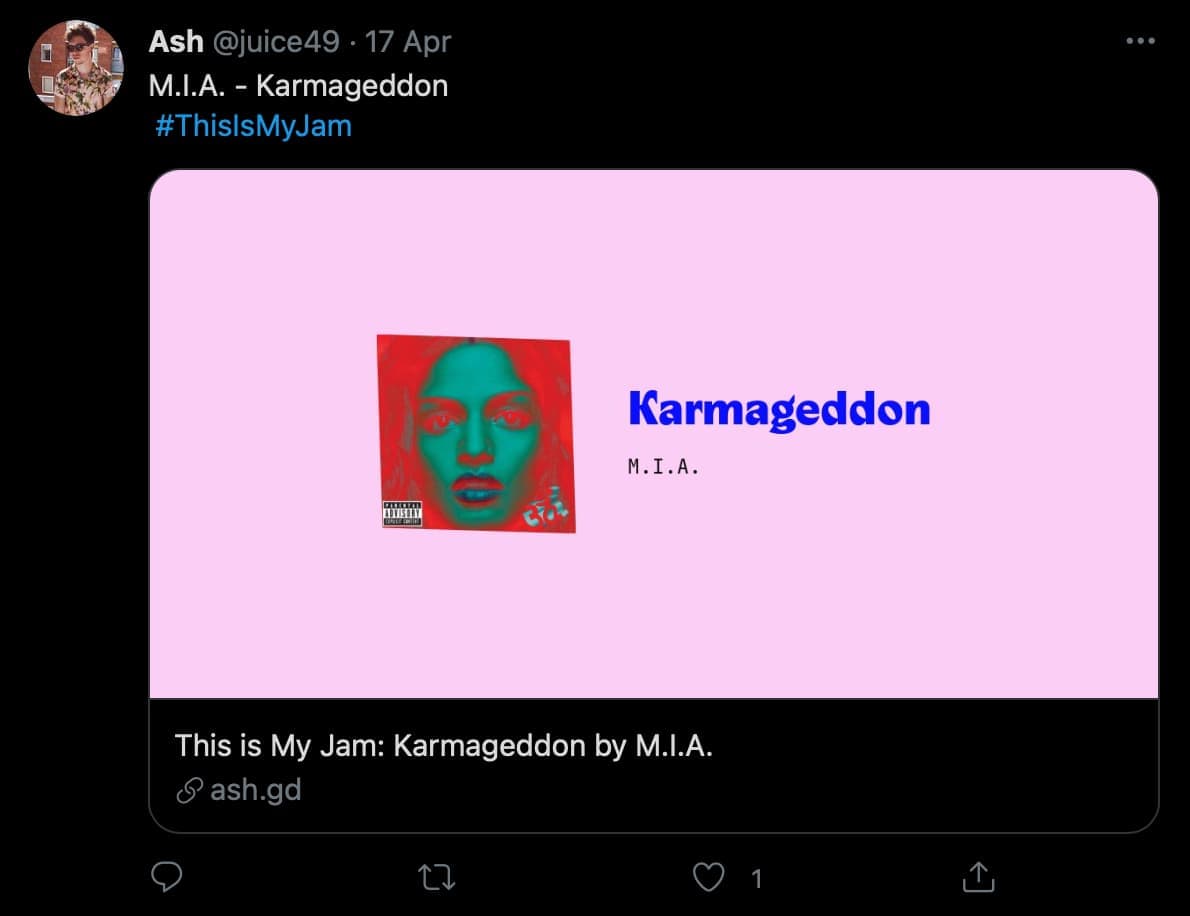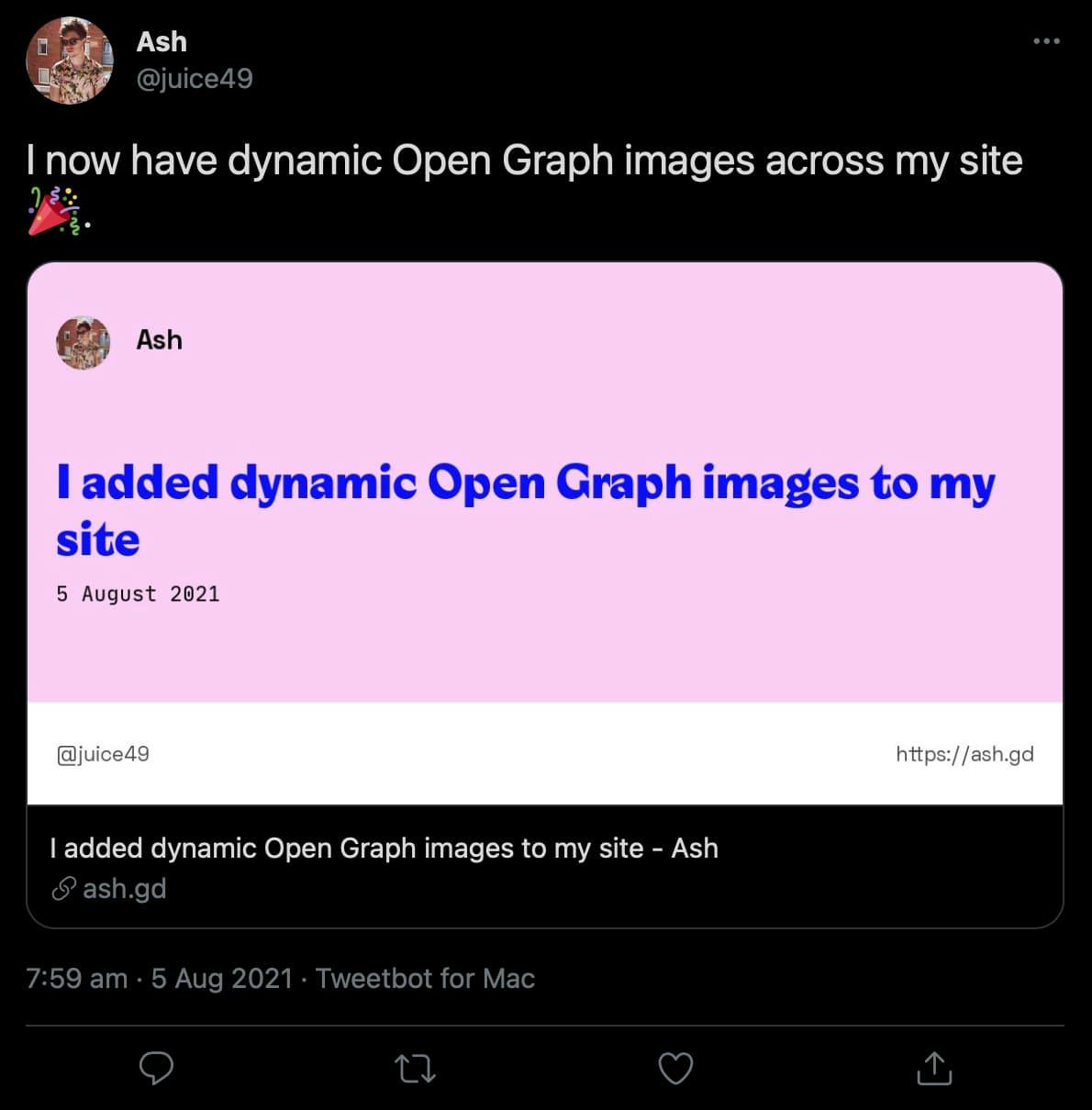I added dynamic Open Graph images to my site
Earlier this year, I started adding Open Graph (OG) images to my site. These are the preview images you see when you share a link, like on Twitter or in iMessage. I maintain a collection of my favourite music, and I thought it would be cool to include the album art and track details when I share a link to a track.

The OG image is generated dynamically for every track I post. The template is a regular Next.js page, which a serverless function captures as an image. You can take a look at the template page here, and its source code here.
I like this approach, because it means I can reuse design system components from the site to create the image. Using the CSS zoom property, these components can be scaled to look great when captured at 1200x600 pixels. I love laying out web content with Flexbox and Grid, so why not use the same techniques for rendering an image?
It should even be possible to use media queries to adapt the template to different aspect ratios. The large preview images you see on your Twitter timeline are 2:1, but 1:1 is supported too. I haven't explored this yet, but I think it would work nicely.
Another neat thing about using a Next.js page is that we can use the Next.js data fetching functions (like getStaticProps) to add dynamic content. I use the same data fetching function when rendering the OG image that I use when rendering the track detail page.
By customising the target path in the request URL, the serverless function can capture any page on the site. This means we can add many different OG image templates to a site by adding new Next.js pages. Alongside the specialised OG images for the This is My Jam tracks, I created a generic template (source code) that can be customised using the URL query string. The page linking to the OG image can provide a title and, optionally, a date, making it ideal for blog posts and pages.

The serverless function uses Puppeteer to capture a 1200x600 pixel snapshot of the template page. The image is generated when it's first requested; no work is done at build-time. The generated image is cached by the CDN, so it doesn't have to be generated for every request.
I created the Next OG Image project that wraps this code up for use with any Next.js site. If you have any questions about it, please feel free to send me a Tweet.